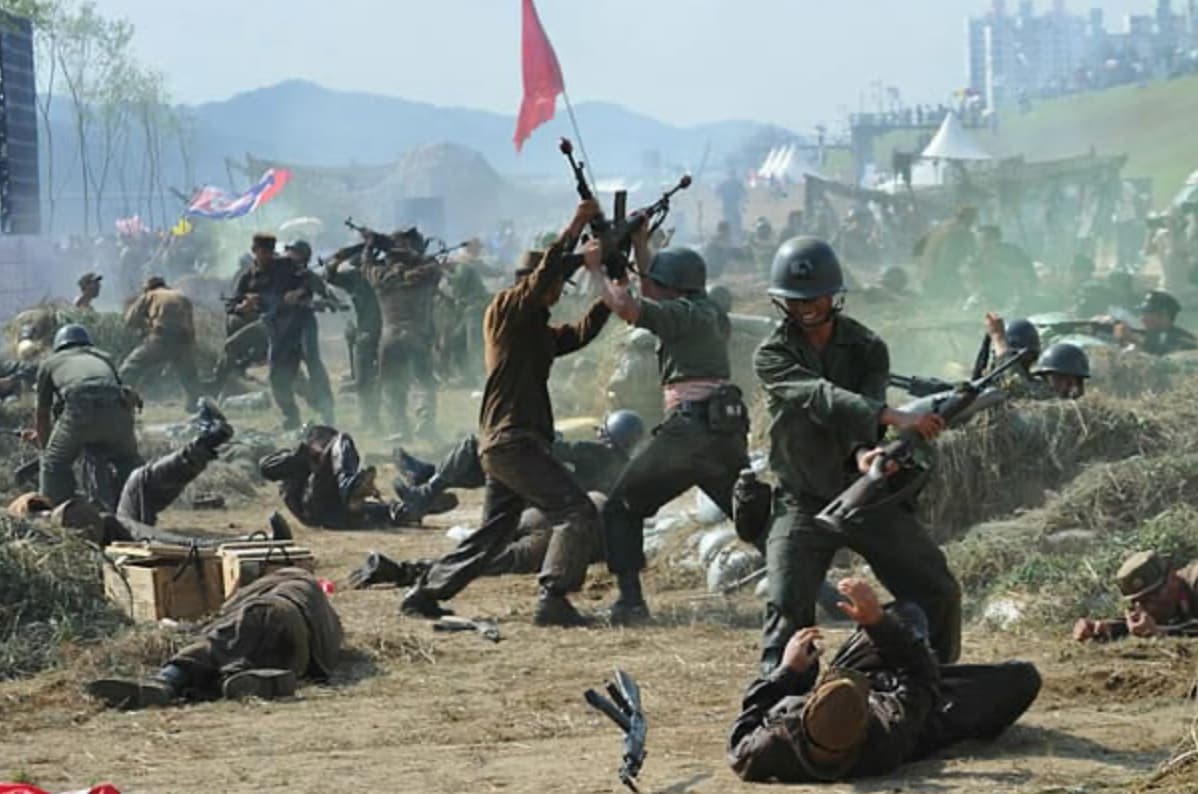
In the ever-evolving landscape of academia, students often seek assistance from various resources to navigate the complexities of writing academic essays. Websites like https://hausarbeiten-kaufen.com/ provide valuable support and guidance, offering insights and strategies for crafting well-structured and meticulously researched papers.
Within the realm of historical studies, particularly in the analysis of warfare, mastering the art of academic writing is essential for effectively conveying insights and interpretations. This guide aims to explore strategies for structuring and writing academic essays on warfare, equipping students with the tools they need to excel in scholarly discourse. By integrating rigorous research, strategic organization, and precise writing techniques, students can elevate their essays to new heights of clarity and impact, fostering deeper understanding and engagement with the complexities of historical conflicts.
Understanding the Battlefield
Before venturing into the realm of academic writing on warfare, scholars must lay a solid foundation through thorough research and analysis. This preliminary phase serves as the cornerstone of informed scholarly discourse, shaping the trajectory of the essay and informing its arguments.
Central to this process is the undertaking of comprehensive literature reviews and the meticulous examination of relevant sources. Delving into an extensive array of scholarly works, ranging from seminal texts to recent publications, allows writers to grasp the breadth and depth of existing scholarship on their chosen topic. Additionally, immersing oneself in primary documents such as archival records, letters, and official reports provides firsthand insights into the historical events and actors under scrutiny.
By engaging in this rigorous exploration, writers can cultivate a nuanced understanding of the historical context and complexities surrounding the conflicts they seek to investigate. This deep dive into the scholarly landscape not only informs the development of the essay’s central argument but also positions the writer within the broader conversation of academic discourse on warfare.
Furthermore, the process of understanding the battlefield extends beyond mere accumulation of knowledge; it entails critical evaluation and synthesis of diverse perspectives. Scholars must navigate conflicting interpretations, assess the credibility of sources, and discern the underlying biases or agendas that may influence scholarly discourse. This discerning approach equips writers with the tools necessary to construct well-informed and analytically rigorous arguments in their academic essays on warfare.
Mapping Out Your Strategy
At the heart of every successful academic essay lies a clear and concise thesis statement—a beacon that illuminates the path for both writer and reader alike. Crafting this pivotal element requires a delicate balance between synthesizing research findings and articulating the writer’s unique perspective.
To begin, scholars must distill their extensive research into a succinct statement that encapsulates the central argument of their essay. This process involves synthesizing disparate sources, analyzing diverse viewpoints, and synthesizing them into a cohesive thesis that reflects the writer’s intellectual contribution to the field.
Once the thesis is crystallized, the next step is to outline the essay—a critical juncture where the foundations of logical flow and coherence are laid. This blueprint serves as a roadmap, guiding the reader through the labyrinthine complexities of the subject matter with clarity and precision.
In constructing the outline, writers must delineate key points and supporting evidence, arranging them in a strategic sequence that reinforces the overarching argument. Each section of the essay should build upon the previous one, leading inexorably towards the ultimate destination—the elucidation and defense of the thesis.
Moreover, the outline serves as a diagnostic tool, enabling writers to identify potential gaps or weaknesses in their argumentation before they manifest in the final draft. By critically assessing the logical progression of ideas at this early stage, scholars can refine their approach and strengthen the structural integrity of their essay.
In essence, mapping out a strategic framework is akin to charting a course through uncharted waters, navigating the turbulent currents of scholarly discourse with purpose and precision. Through meticulous planning and thoughtful organization, writers can guide their readers on a transformative journey of discovery, unraveling the complexities of the subject matter with clarity and insight.
Writing and Revision
The process of writing an academic essay demands more than just stringing together eloquent sentences; it requires a meticulous attention to detail and a relentless pursuit of clarity. Effective introductions and conclusions serve as the architectural framework that supports the entire edifice of the essay. Just as a skilled general strategically positions troops before battle, adept writers strategically craft these sections to captivate the reader’s attention from the outset and leave a lasting impression.
In the introduction, writers must not only provide context for the discussion but also articulate a compelling thesis statement that serves as the rallying cry for the essay. This thesis should be clear, concise, and indicative of the overarching argument that will be developed throughout the essay. Likewise, the conclusion should not merely recapitulate the main points but should instead synthesize them into a cohesive whole, leaving the reader with a sense of closure and a lasting impression of the essay’s significance.
Within the body paragraphs, each idea should be meticulously developed with precision and coherence. Like seasoned generals directing their troops on the battlefield, writers must marshal their evidence and analysis in support of their central argument. Each paragraph should flow seamlessly into the next, building upon the preceding one to construct a cogent and persuasive narrative.
Revision is the crucible in which raw ideas are forged into polished prose. Just as generals refine their battle plans in response to changing circumstances, writers must continuously revisit and revise their arguments to ensure their clarity and effectiveness. This process involves scrutinizing every word and phrase, eliminating ambiguity, and sharpening the overall impact of the essay. Through revision, writers can refine their arguments, clarify their prose, and ensure consistency throughout the essay, ultimately transforming a rough draft into a polished masterpiece.
Commanding Attention: Citations and References

In the relentless pursuit of academic excellence, proper citation and referencing practices are the armor that shields scholars from accusations of plagiarism and intellectual dishonesty. Much like generals citing their sources of intelligence before launching an offensive, writers must meticulously document their sources to uphold scholarly integrity and acknowledge the contributions of others.
Familiarity with commonly used citation styles, such as APA, MLA, or Chicago, is essential for navigating the treacherous terrain of academic writing. Writers must adhere to the guidelines of their chosen style with precision and consistency, ensuring that their citations are accurate and conform to the conventions of scholarly discourse.
Accurately citing sources not only lends credibility to the essay but also provides readers with a roadmap for further exploration of the topic. By meticulously documenting their sources, writers invite readers to delve deeper into the scholarly conversation, fostering a spirit of intellectual inquiry and discovery.
A comprehensive bibliography or reference list is the crowning glory of thorough research, serving as a testament to the depth of scholarly engagement. Much like a battlefield strewn with fallen adversaries, a well-constructed bibliography attests to the writer’s command of the relevant literature and underscores the rigor of their scholarly inquiry.
Conclusion
In conclusion, mastering the art of structured academic writing is indispensable for scholars seeking to navigate the complexities of warfare. By understanding the battlefield of research, mapping out a strategic approach, engaging with clarity and precision, and commanding attention through proper citation practices, writers can elevate their essays to new heights of scholarly excellence.